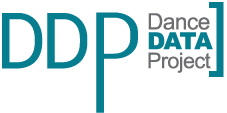DDP Talks To Lauren Flower (Company Artist)
Oregon Ballet Theatre
DDP: As a queer woman in ballet, what kinds of barriers have you faced—especially when moving into choreographic roles? Are there ways your identity has shaped how you’re perceived in the field?
Flower: “As a queer artist, I bring a unique perspective that naturally shapes my approach to choreography. I’m drawn to unconventional relationships, dynamics, and ways of moving that exist outside traditional narratives. This perspective allows me to layer movement in ways that reflect the complexity of identity and the human form. While ballet is rooted in tradition, I’ve found space for evolution within it—space to question, disrupt, and reimagine. My identity is present in how I move, how I create, and how I see the world. As a choreographer, it informs my work in ways that feel honest, nuanced, and deeply authentic.”
DDP: What can ballet schools and university programs do to better support the development of women and queer choreographers?
Flower: “For programming to grow meaningfully, we need to maintain openness and ongoing dialogue. Ballet schools have a responsibility not only to teach the craft of the art but to also bring creative guidance to the forefront. As a faculty member at Oregon Ballet Theatre School, I’ve had the pleasure of supporting students in their own choreographic endeavors through programming designed to give them space to create work on their peers. This support also comes through representation. When women and queer artists hold leadership roles—whether as faculty, on selection panels, or in mainstage programming—it sends a message about what’s possible. We should strive not only to reflect where we are now but to imagine where we can go. I’m excited for more opportunities that allow students to grow and learn, not just creatively as dancers, but first and foremost as people.”
DDP: How has creating commissioned work influenced your career—as both a dancer and a queer choreographer?
Flower: “Creating commissioned work has shaped me in ways I never imagined. Each opportunity feels like an invitation to step more deeply into my craft, both as a dancer and as a queer choreographer. I approach these moments with a listening ear, entering the space with care and intention. I stay attuned to the dancers and the collaborative stories that feel necessary to tell. It is a practice of discovery that has taught me to trust my instincts while remaining open to surprise.”
“These opportunities have also allowed me to carve out space for stories and relationships that often go unseen. Growing up, I often thought about the narratives I longed to witness on stage—the ones that would have helped me feel understood. That longing continues to guide my work today. I ask: How can I tell them now? Through questioning of tradition, I strive to offer something honest and personal. For me, it’s essential to create work that reflects a wider
spectrum of intimacy and connection, using movement as the language through which those complexities unfold.”
“Each commission is both a challenge and a gift. It’s a chance to expand my voice and to share it in collaboration with others. That exchange continues to shape who I am and it brings me
ongoing inspiration.”
DDP: When choreographing for a company, what kinds of responsibilities or expectations have you encountered, both creatively and institutionally?
Flower: “When choreographing for a company, I feel a deep responsibility to bring something honest and to offer work that comes from a place of internal discovery. Choreography is a shared experience between the creator and the dancer, and it is important to honor that exchange. Each process becomes a conversation between my vision, their movement, and the work we build together in the studio.”
“I have found an unspoken expectation to bring relationality to the forefront. Whether a piece is conceptual or rooted in narrative, I am moved by feeling that resonates not just visually but emotionally. I try to create space for dancers to feel seen within the work and for audiences to stay curious. That connection is what I return to again and again—a perspective that is personal and grounded in how I understand movement, relationship, and story.”
“The most meaningful moments often come from that space in between, where structure gives way to discovery and something unexpected is allowed to take shape.”
DDP: In your experience, how can the process of commissioning work be improved to better support underrepresented voices—especially women and female queer artists.
Flower: “To better support underrepresented voices in commissioned work, it is essential to create spaces where artists feel truly welcomed, valued, and encouraged to explore their unique
perspectives. Queer artists often bring an approach grounded in vulnerability and openness. These perspectives need room to grow without feeling limited or constrained.”
“Clear communication, gentle guidance, and thoughtful mentorship help artists feel supported and confident throughout the creative process. I am deeply grateful to experience this at Oregon
Ballet Theatre. Artistic director Dani Rowe and the entire team have fostered an environment like this, opening my mind to possibilities I never knew existed.”
“When artists are met with kindness and trust, collaboration becomes a space for discovery and growth. Commissioning works best as a partnership that encourages artists to fully express their voices, especially those that challenge traditional narratives and open new possibilities on stage.”




